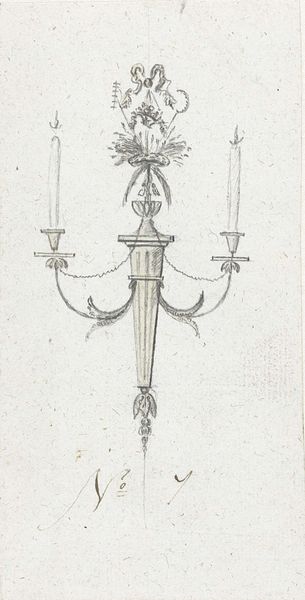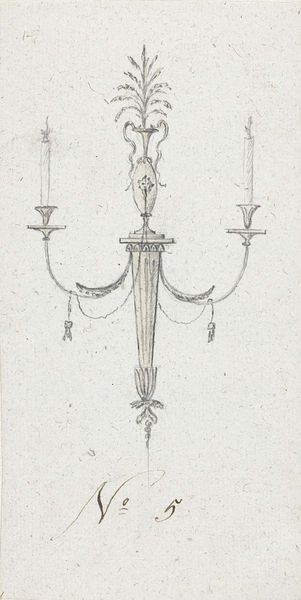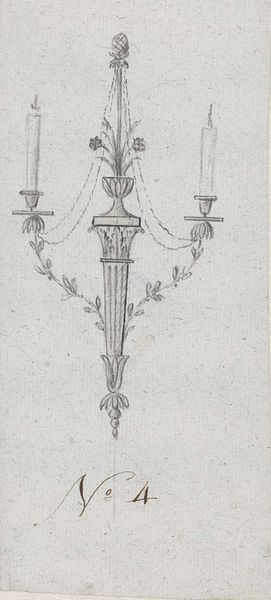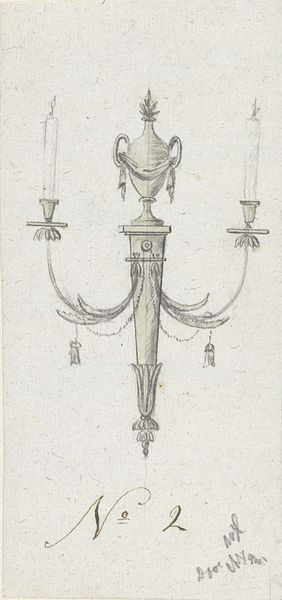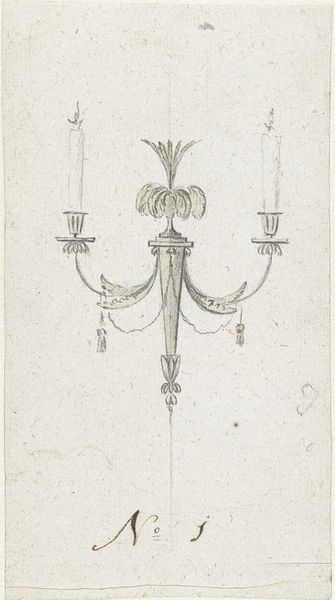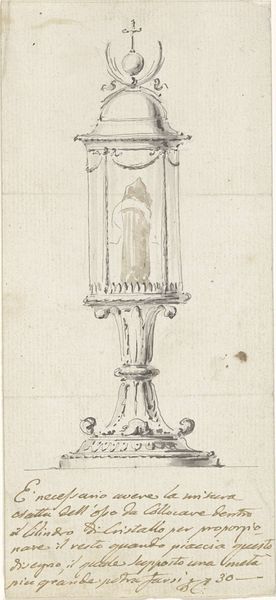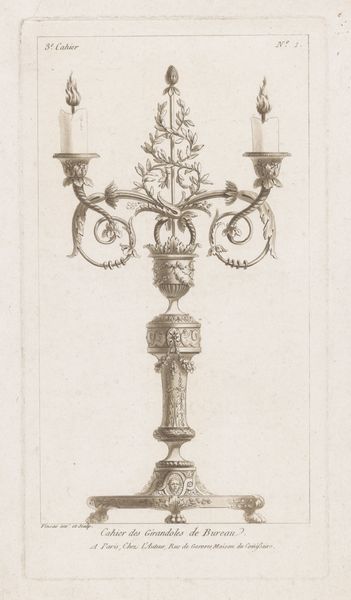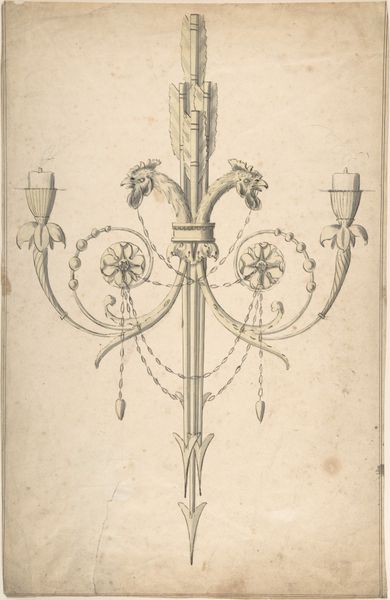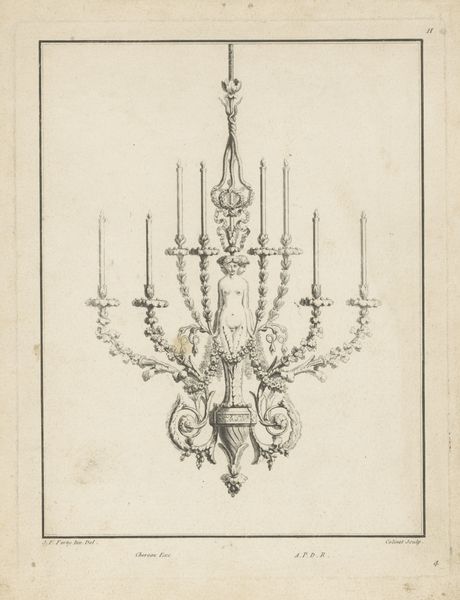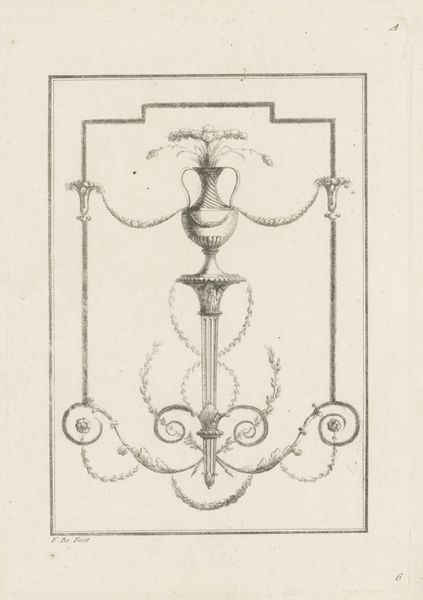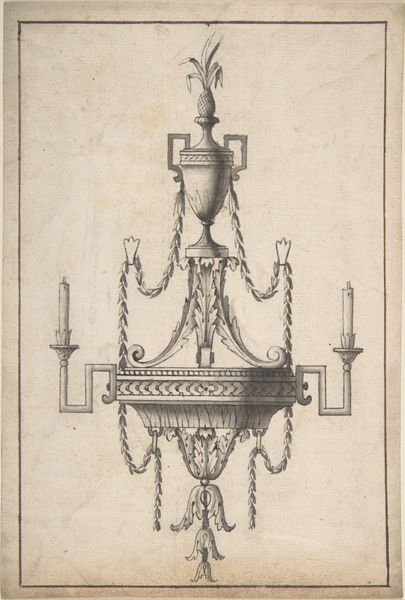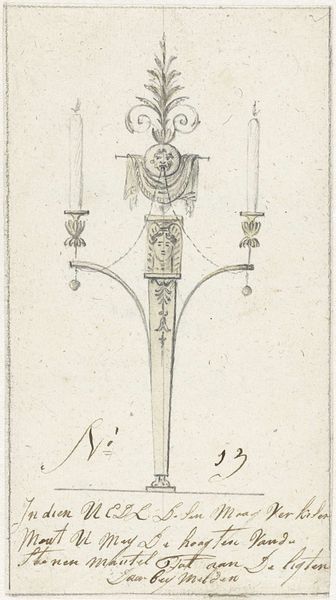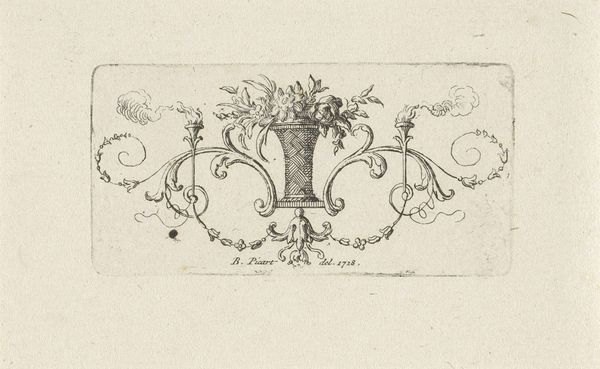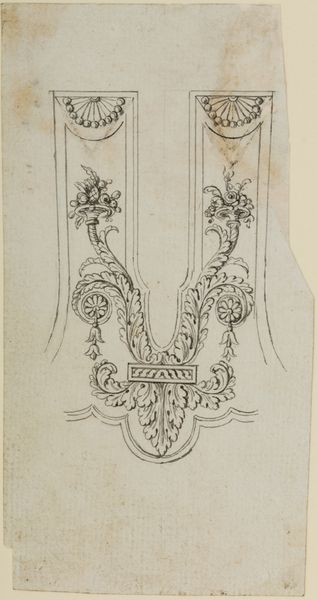
drawing, pencil
#
drawing
#
neoclacissism
#
form
#
pencil
#
line
#
decorative-art
Dimensions: height 179 mm, width 94 mm
Copyright: Rijks Museum: Open Domain
Editor: We’re looking at "Ontwerp voor een kandelaar (No. 6)," or "Design for a Candelabra (No. 6)", a pencil drawing by Abraham Meertens, created sometime between 1767 and 1823. The delicacy of the line work is striking. It feels very controlled, almost mathematical. What compositional elements stand out to you? Curator: The drawing presents a fascinating study in symmetry and balance, key tenets of Neoclassicism. Note how Meertens employs a central vertical axis, grounding the candelabra’s structure. The radiating curves of the floral garlands provide a counterpoint to the fluted, columnar body. Does this contrast generate tension or harmony, in your opinion? Editor: I think harmony. The curves soften the rigidity of the column, making it more visually appealing. But what about the symbolism? Does the arrangement of the leaves and other decorative elements hold significance? Curator: From a formalist perspective, the *arrangement* is the significance. It is through the composition and distribution of form, color (or lack thereof), and material (the pencil and paper) that the artwork speaks. Each line contributes to the overall structure, influencing our perception and intellectual engagement. Are you interested in historical narratives of form? Editor: Yes, please elaborate! I find it helpful. Curator: The Neoclassical aesthetic drew heavily from classical Greek and Roman forms, embracing rationality and order. Can you detect such elements in the candelabra's design? For instance, observe the geometric purity of the central shaft and the stylized acanthus leaves. What we are exploring is how this structure constructs our understanding of it. Editor: I see that now, the echoes of classical architecture. I initially thought it was simply decorative. Now, focusing on form and arrangement, I understand it creates more complex historical links. Curator: Indeed. By studying how its elements work, interact and relate to one another, without reference to other art or external markers, we understand its structural essence. Editor: Thanks! Thinking about the piece this way provides new context to decode other neoclassical drawings.
Comments
No comments
Be the first to comment and join the conversation on the ultimate creative platform.
